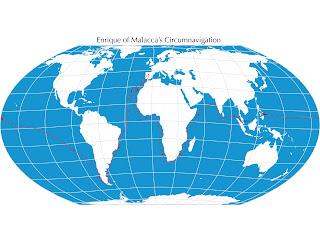 |
| Words spoken by the Patagonian Giant Paulo aboard the Trinidad, transcribed by Antonio Pigafetta. |
… All [these] words are pronounced in the throat, for such is their method of pronunciation.
Words of the Patagonian giants.
| ||||||||||||||||||||||||||||||||||||||||||||||||||||||||||||||||||||||||||||||||||||||||||||||||||||||||||||||||||||||||||||||||||||||||||||||||||||||||||||||||||||||||||||||||||||
Editor's Note: Ferdinand Magellan and his Armada de Molucca were the first Europeans to encounter the "Patagonian giants," whom chronicler Antonio Pigafetta described as so tall that "we reached only to his waist." Europeans on later voyages, including Sir Francis Drake's in 1579, also reported this race of giants living along the Patagonian coast (modern-day Argentina). The giants were likely Tehuelches, an indigenous people in the region.
(C) 2021 by Targets in English. All rights reserved.
Series: Magellan Chronicler Antonio Pigafetta Describes the Patagonian Giants
Part 1. First Contact Patagonia: Magellan and the Patagonians, Pigafetta 1
Part 2. Giants and Guanacos: Magellan and the Patagonians, Pigafetta 2
Part 3. Giant John: Magellan and the Patagonians, Pigafetta 3
Part 4. How to Capture Patagonian Giants: Magellan and the Patagonians, Pigafetta 4
Part 5. Culture of the Giants: Magellan and the Patagonians, Pigafetta 5
Part 6. Words of the Patagonians: Magellan and the Patagonians, Pigafetta 6
Part 7. Journey's End: Magellan and the Patagonians, Pigafetta 7
See Also:
Find us:

